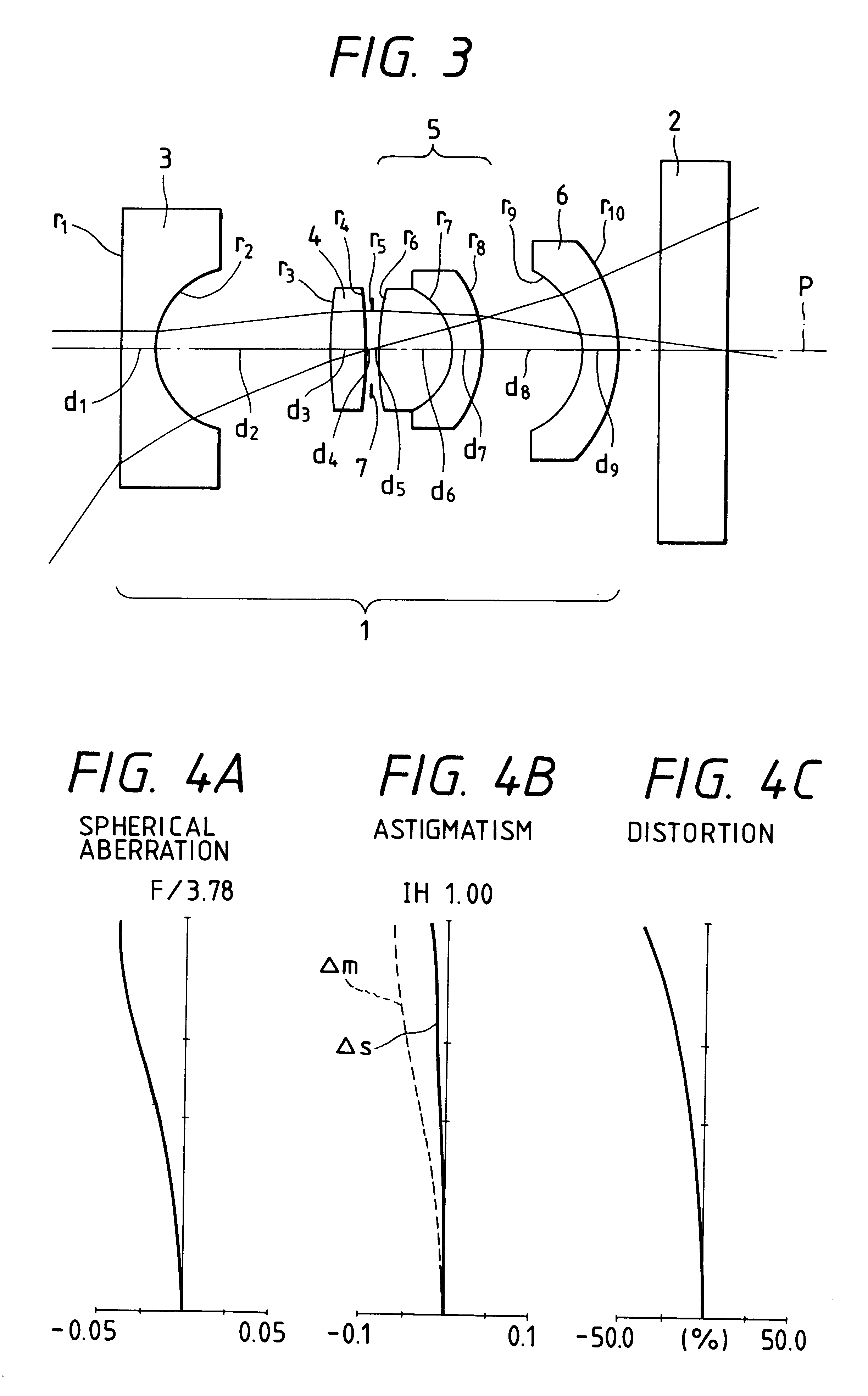Electronic endoscope
a technology of endoscope and endoscope, which is applied in the field of electronic endoscope, can solve the problems of excessive distortion, inability to reproduce the proper colors, and the diameter of the rear lens unit must be enlarged, so as to prevent shading and improve distortion.
- Summary
- Abstract
- Description
- Claims
- Application Information
AI Technical Summary
Benefits of technology
Problems solved by technology
Method used
Image
Examples
first embodiment
The objective system of the electronic endoscope in this embodiment, as shown in FIG. 3, is constructed with an objective lens system 1 and a CCD 2 which is placed on the light-emergence side thereof. The objective lens system 1 includes, in order from the object side not shown, a first lens unit 3 of a negative lens, a second lens unit 4 of a positive lens, a third lens unit 5 of a positive cemented lens, and a fourth lens unit 6 of a meniscus lens having the concave surface on the object side. An aperture stop 7 is interposed between the second lens unit 4 and the third lens unit 5.
In the electronic endoscope of the first embodiment, the meniscus lens with a concave| surface directed toward the object side is used in the fourth lens unit 6 placed closest to the image side, of lens components constituting the objective lens system 1. It is thus intended to solve the problems that the entire length is increased, the lens diameter is enlarged, and considerable distortion is produced ...
second embodiment
In this embodiment, for the purpose of further reducing the entire length of the objective system, the objective lens system is constructed with three lens components by eliminating the field lens. he objective system of the electronic endoscope of the second embodiment, as shown in FIG. 16, comprises an objective lens system 10 and the CCD 2 placed on the light-emergence side thereof. The objective lens system 10 includes, in order from the object side, a first lens unit 11 of a negative lens, a second lens unit 12 of a positive lens, and a third lens unit 13 of a positive lens. Between the first lens unit 11 and the second lens unit 12, an infrared cutoff filter or laser cutoff filter 14 is interposed, when necessary. An aperture stop 15 is provided on the light-incidence surface of the third lens unit 13. The CCD 2 is the same as that used in the electronic endoscope of the first embodiment which has the function of prevention of shading.
The electronic endoscope of the second emb...
third embodiment
In any endoscope, not to speak of the electronic endoscope, its elongated insertable section must be inserted in a narrow tubular cavity or human body, and hence it is desired to minimize the diameter of the insertable section. Additionally, in order to facilitate the insertion thereof for a bent part and relieve pain caused to a patient in the endoscope for medicine, it is also desired to reduce the length of the rigid portion at the distal end of the insertable section.
To meet these demands, the electronic endoscope, in particular, requires a more compact design of a solid-state imager disposed at the distal end or ocular section thereof, that is, compactness of the CCD. However, the compactness of the CCD causes its pixel size to be diminished and makes the area of the photosensor section of the CCD small. Consequently, the problem is encountered that the amount of light which is necessary for entering the image area of the CCD to form an object image is decreased and the output ...
PUM
 Login to View More
Login to View More Abstract
Description
Claims
Application Information
 Login to View More
Login to View More - R&D
- Intellectual Property
- Life Sciences
- Materials
- Tech Scout
- Unparalleled Data Quality
- Higher Quality Content
- 60% Fewer Hallucinations
Browse by: Latest US Patents, China's latest patents, Technical Efficacy Thesaurus, Application Domain, Technology Topic, Popular Technical Reports.
© 2025 PatSnap. All rights reserved.Legal|Privacy policy|Modern Slavery Act Transparency Statement|Sitemap|About US| Contact US: help@patsnap.com



